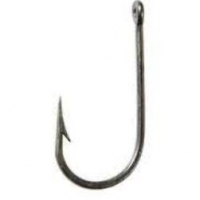saltwater rig
Question
Dear Rich,
I'm a guy who doesn't have a lot of experience saltwater fishing but am anxious to get into it. I recently purchased a Penn 965 baitcasting reel. I would like to use it as a foundation for a blue water light tackle set up for light tuna, mahi and the like. Could you give me some suggestions on the type of rod (makes, models, strenghth etc...) I might use in combination with this reel? Also what wieght line would work well for this set up? Would you suggest mono or braided? What makes of each line are proven performers?
Thanks so much for making you experience available to us begginers!
JD
Answer
Hi JD
I am a big fan of the Shakespeare Ugly Stix line of rods. I have several in both spin and conventional styles. They produce a series of inshore rods that sell in most catalogs such as Basspro or Cabelas for $40. Though there are more expensive rods made by a whole host of manufacturers, I have not seen anything really worth the extra money compared to the Ugly Stix. A 6 1/2 foot medium action rod seems just about right for me. I would suggest starting with this and then seeing just how it feels.
Almost any major name brand of monofilament line is quite good. Though each company tries to convince you of the superiority of their product, my experience has shown these differences are slight. I tried the new flourocarbon line and was not particularly impressed. It just seemed to be a stiff mono with less knot strenght.
In the last few years I have gotten away from mono lines and have tried some of the newer high tech synthetics. Just as all monofilament lines are based upon the same basic chemical nylon, the newer sythetics are made from a single chemical called either spectra or deneema. How they are braided, extruded, or coated varies with different manufacturers, but the characteristics are fundamentally the same, especially when new. With time and wear and tear, the way each holds up is affected by how it was made. The non braided lines with a coating such as "Fireline" tend to loose their color and fray somewhat. The braids such as "Spiderwire, Powerpro or Tuff" seem to show less of this characteristic as they get used. I have used all the above, and if you replace the line after a reaonable amount of time and intense use, any one should give you good service.
Since these lines are rather expensive compared to mono but have a much smaller diameter, I load my reels with mono and top off the working end with sufficient "superline" to handle the run of any fish I expect to encounter under the particular method and location I am fishing. It works for me. To fill a reel like yours with one of the "superlines, would require several hundred yards. And unless you really feel you will have a circumstace where a fish will take that much line off your reel, why spend that money for a spool of line where the majority will never come into use?
Breaking strenght of line is the same whether using mono or superline. Just select something that is appropriate to the rod and reel. Using baitcasting reels and 6 1/2 foot casting rods, I generally fish with lines in the 12 to 20 pound test range. Though the superlines are of a small diameter and much heavier pound test lines can easily be loaded on your reel, please do not do that. The reel was not made for that. Neither was the rod. No matter how seemingly indestructable todays rods are, you cannot expect a casting rod to handle a line intended for use with heavy duty big game trolling rods. And neither are the drag and gears of the reel designed for that much pressure.
Finally, and most importantly, superlines can be dangerous, especially in very heavy pound tests. Because of how strong and thin they are, it is very possible to sustain a serious injury if such a line were to get wrapped around a finger or hand while being pulled by a large fish. Worst of all would be a snag on the bottom where it is nearly impossible to break the line. Even 15 and 20 pound test lines of this sort should be handled with great care in terms of never allowing the line to loop around a finger or hand. It is one of the characteristics of these lines because of their limpness, as compared to mono.
-Rich
Fishing off dock in shallow harbor
biggest fish


